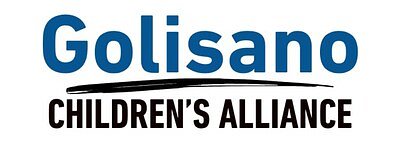
Golisano's $253M Pledge: Building a Collaborative Future for Children's Healthcare
Tom Golisano commits $253 million to expand pediatric care access through a new hospital alliance, bringing his lifetime charitable giving over $1 billion. Is this collaborative model the future of children’s health?
Golisano’s $253M Pledge: Building a Collaborative Future for Children’s Healthcare
NEW YORK, NY – October 28, 2025
A Billion-Dollar Commitment to Pediatric Care
Entrepreneur and philanthropist Tom Golisano has announced a landmark $253 million commitment to pediatric healthcare, establishing the Golisano Children’s Alliance. This initiative will bolster six existing children’s hospitals – Connecticut Children's, Penn State Health Children’s, University of Kentucky Children's, University of Maryland Children's, University of Vermont Children's, and WVU Medicine Children's – and integrate them with four already supported facilities: University of Rochester, Upstate, Lee Health, and John R. Oishei. The pledge pushes Golisano’s lifetime charitable giving beyond the $1 billion mark, solidifying his place as a leading figure in philanthropic giving.
“This isn’t just about writing a check,” explains a healthcare administrator familiar with Golisano’s approach, speaking anonymously. “It’s about building sustainable infrastructure and fostering collaboration to address systemic challenges in pediatric care.” The announcement arrives at a critical juncture, as children’s hospitals grapple with rising costs, workforce shortages, and increasing demand for specialized services.
Beyond Funding: The Alliance Model
The Golisano Children’s Alliance isn’t solely a funding initiative. It aims to create a network for enhanced collaboration, resource sharing, and standardized best practices. This approach moves beyond traditional philanthropic models that often focus on individual hospital projects. The alliance seeks to address disparities in access to specialized pediatric care, particularly in underserved communities.
The research indicates that Golisano’s strategy aligns with a broader trend in healthcare towards collaborative networks. “We’re seeing more and more hospitals realize they can achieve better outcomes and operate more efficiently by working together,” notes a health policy analyst. “The Golisano alliance seems to be a deliberate effort to leverage that synergy.” Several of the hospitals receiving funding already participate in regional networks, demonstrating a pre-existing foundation for collaboration.
Initial plans for the alliance include shared data analytics platforms to identify trends in pediatric health, joint training programs for medical professionals, and standardized protocols for treating complex conditions. “The goal is to create a learning ecosystem where hospitals can share knowledge and improve the quality of care for all children,” states a representative from one of the participating hospitals. The emphasis on standardization is particularly noteworthy, as it addresses a long-standing challenge in healthcare – ensuring consistent quality of care across different institutions.
Addressing Regional Needs and Disparities
The selection of the six new hospitals appears to be driven by a strategic assessment of regional needs and gaps in pediatric care access. For example, WVU Medicine Children's in West Virginia serves a largely rural population with limited access to specialized medical services. Similarly, the University of Vermont Children’s Hospital fills a critical role in providing pediatric care to a geographically isolated region.
“The hospitals selected aren't necessarily the biggest or most prestigious,” points out a researcher specializing in healthcare disparities. “They're the ones that serve communities with the greatest need.” The focus on regional needs underscores Golisano’s commitment to addressing health equity and ensuring that all children have access to high-quality medical care.
The initiative acknowledges that access to care is not solely a matter of financial resources. Social determinants of health – such as poverty, housing instability, and lack of transportation – also play a significant role in shaping health outcomes. The Golisano alliance intends to partner with community organizations to address these underlying factors and improve the overall health of children in the regions served.
Furthermore, the initiative includes provisions for expanding behavioral health services. This is particularly important, given the growing prevalence of mental health challenges among children and adolescents. “We’re seeing a surge in anxiety, depression, and other mental health conditions,” notes a child psychologist. “Investing in behavioral health services is crucial to addressing this crisis.” The alliance plans to establish dedicated behavioral health centers and integrate mental health screenings into routine pediatric care.
